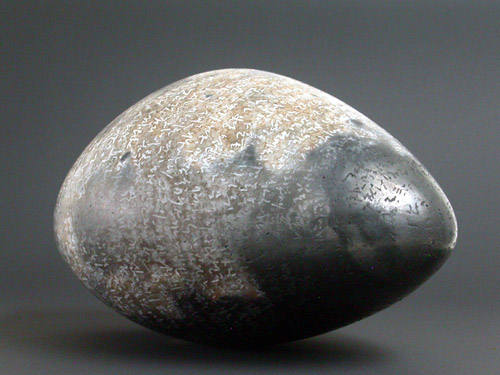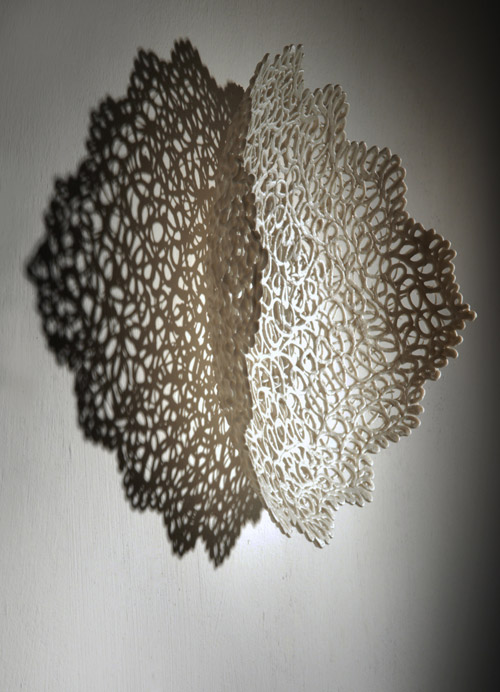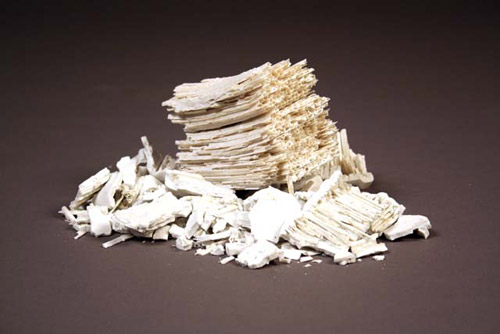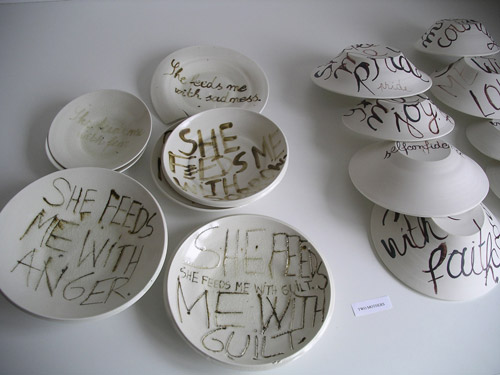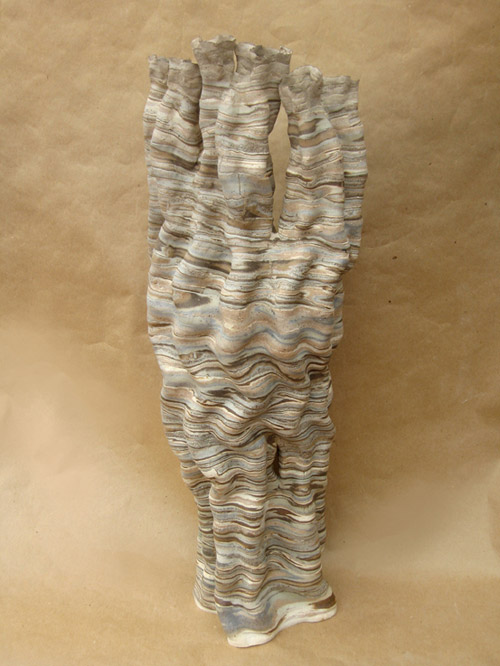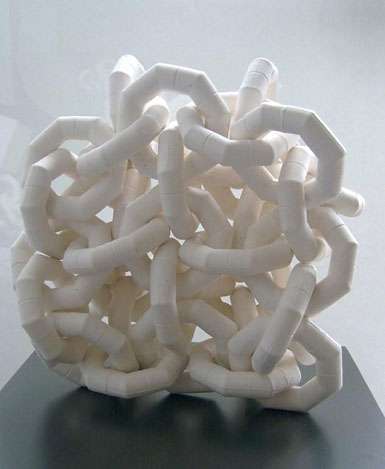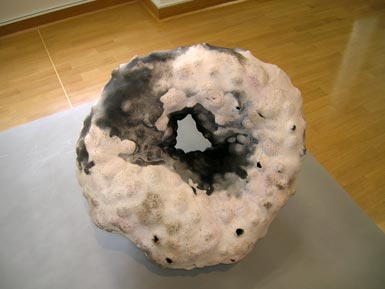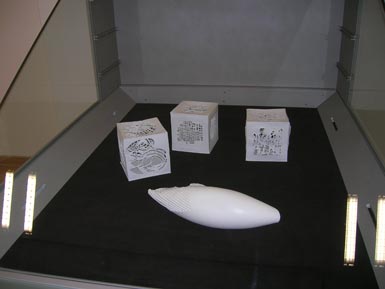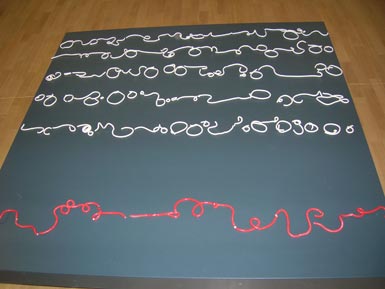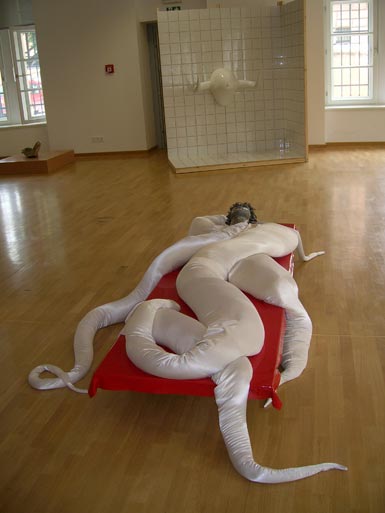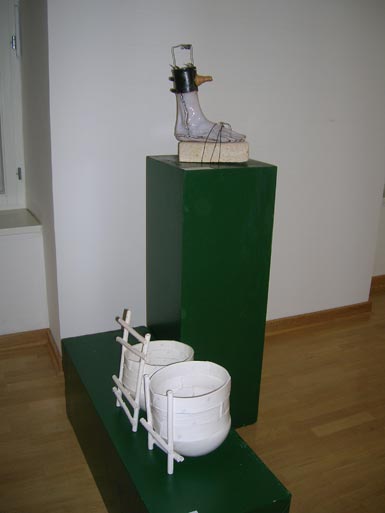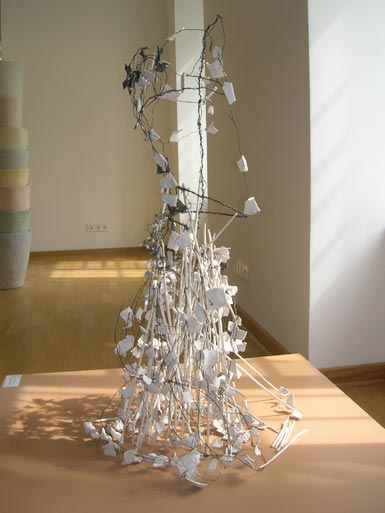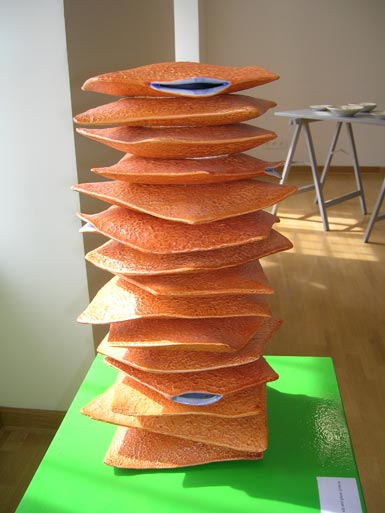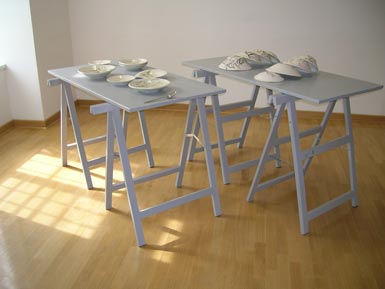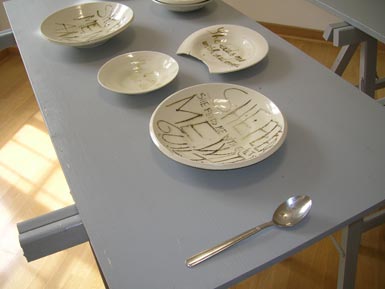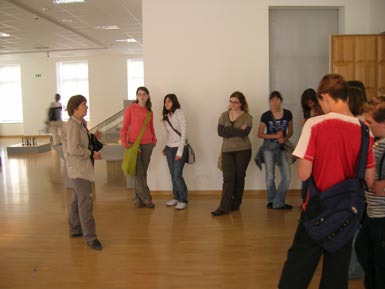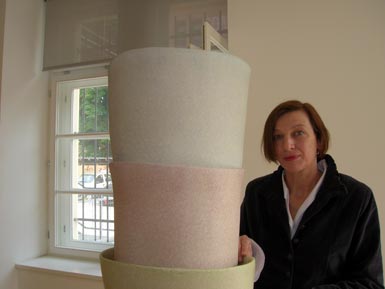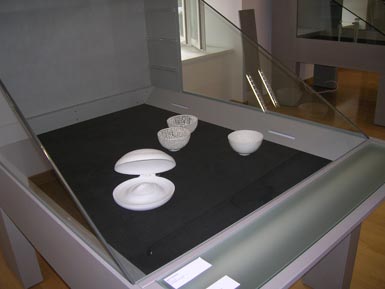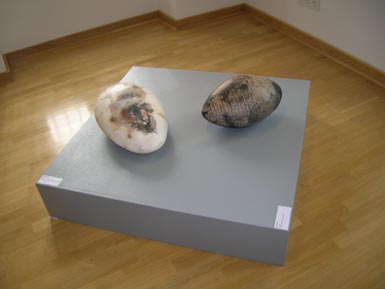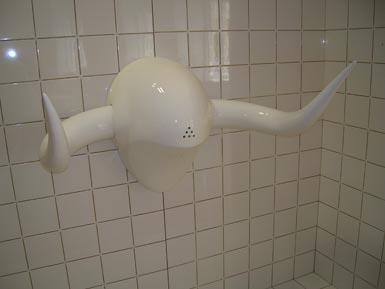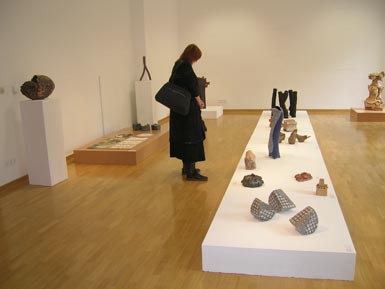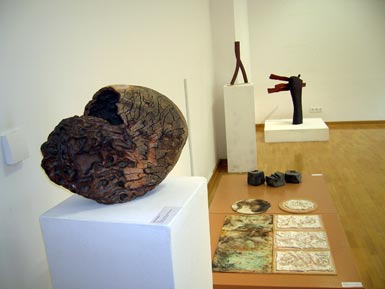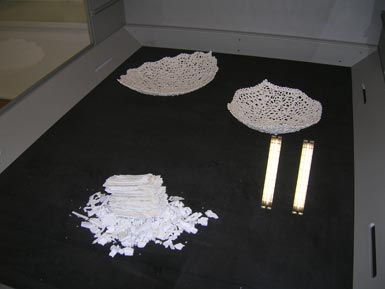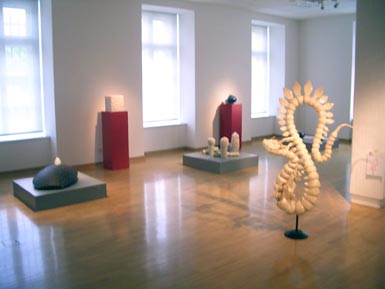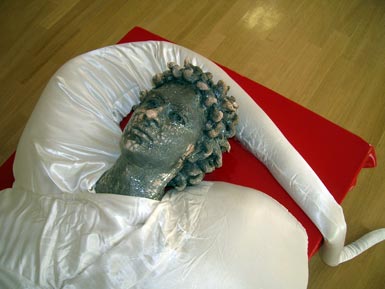

|
|
|
UNICUM 09 15. May - 27. September Opening hours: Thuesday - Sunday: 10.00 - 18.00 Chairman of the jury: Nadja Zgonik The 1st international ceramic triennial Unicum in Ljubljana is offering us the opportunity to start thinking about ceramics in new way. Along all the tradition which we have in our space - important potter's history, few hundred years history of industrial ceramics and more than hundred years long tradition of sculpture in fired clay - it is about time to place this artistic sort into context of other happenings in visual arts today. In contemporary art lately already completely prevailed the principle of equality of all media, technological generated and others which are results of manual - trade practice. Prejudices from both sides have reduced - an artist in artistic process can each time decide which medium will he choose. At exhibition grounds over the world is nonexclusively connecting everything from photography, videoprojections, painting, plain cut outs, light objects, ready - mades, drawings, to sculptures from all sorts of materials or applicable objects, bottles, cups,…This ordered freedom from burden has to have effects with ease. With democratic approach it is possible to discover always new possibilities in use of technics, also ceramics which we seem to know everything about it until yesterday. Ceramics has special place among other artistic media. Clay as the oldest material for creating can't get rid of the reflection upon past time. It is synonym for the beginning of history time because the vessel that mankind eat out of since the very beginning was made out of it. In shape of clay lamella was also field of notes that at first annotated stock of food then true or invented stories and so preserved memory. Ceramics is material that conjunctions numerous bipolarities. Apparently strong and massive shape is actually fragile, it can break with ease (also glass is fragile but the feeling that if we break it we will lose all direct imprinted traces is less present). In spite of fragility is at the same time the one that symbolizes persistent clinging to life (maybe even hardiness) of our civilization because from found fragments of pottery we can compose objects that were once used and so we can create image of the past time. We can compare composing broken fragments with postmodernistic procedure of joining memorial fragments, only that now we don't reconstruct meanings from the past any more but we search for new meaning. There are few more binary oppositions joined in this artistic material. Product of ceramics is, just like sculpture, imitation of applicable forms at the same time. Like sculpture vessel can also be just an object to look. The look enters through opening of vessel into inside of sculpture and catches in it. In this way sculpture evidently returns the look to the viewer and combines opposition inside - outside. Complexness of clay as an artistic material is also showing in the fact that we can talk about it in whole span from poststructuralistic rhetoric to again discovering archetipic symbolism of fundamental elements when soil, which is primary substance, as in alchemical process of progressing matter in junction with fire develops higher quality. Work in ceramics is at the same time mimesis, mimicry and simulation. Mimesis means that soil (clay) behaves as soil and as such this substance is cut off from all potential methaphorism. With mimicry clay, if we for example use engobe, shows as soil and with simulation it pretends to be something else, particularly when it appears as applicable object or it has sculptural appearance that estranges the substance from its primary matter. Two controversial characteristics of ceramics, its indefinableness and at the same time determinateness with some markers that rarely any object completed in this substance can avoid, place it into position of ultimate inexpressibility and also enigmatibility. Maybe this is the proper grounding that will enable ceramics to be the material out of which we will create something new today. Is its connection with several millennials of tradition burden? Or simple just a very long way maybe even the destiny of our civilization that we have to just continue? Today work with clay can also be placed in political discourse. Current social changes that are consequence of economic crisis and new ecological consciousness brought us into situation when as one of possible ways of living in the future indicates renewed reestablishment of individual as self-sufficient being. In big cities already began to rise communities which want to be independent of providing chains of big commercial concerns and other systemic reestablished nets that direct our lives. Likewise onetime handicraftsmen they are linking together with reestablishment of basic economy of survival which less burdens the environment. In this search for new living paradigms clay will have exceptional position. Firstly because it is ecological material and secondly for its universality that connects all existential forms of creative activity: popular art (national pottery), high art (artistic ceramics) and modelling (serial made objects and vessels). And what would in this contemporary time of tension problems about protecting our planet be more current artistic metaphor than fragile soil?
UNICUM 09 IN NATIONAL MUSEUM OF SLOVENIA 15. May - 27. September Opening hours Curator: Dragica Čadeľ Lapajne The exhibition of the 1st International ceramic triennial
Unicum 09 in Slovenia creates chance for comprehension of ceramics
to get appropriate value in contemporary fine art. Central exhibition
ground in National museum of Slovenia - Metelkova, Maistrova 1 will
present extensive international exhibition of artistic ceramics which
is competitory and it is organized upon already acknowledged calls
for applications in the world. There will be artworks of 76 authors
from 28 countries exhibited. The selection has been made by competent
international jury and with the selection members of the jury exposed
different levers of contemporary authorial practice at home and in
the world.
|

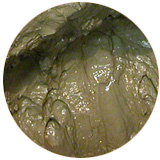

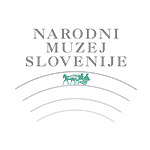 National
Museum of Slovenia - Metelkova, Maistrova ulica 1, 1000 Ljubljana
National
Museum of Slovenia - Metelkova, Maistrova ulica 1, 1000 Ljubljana